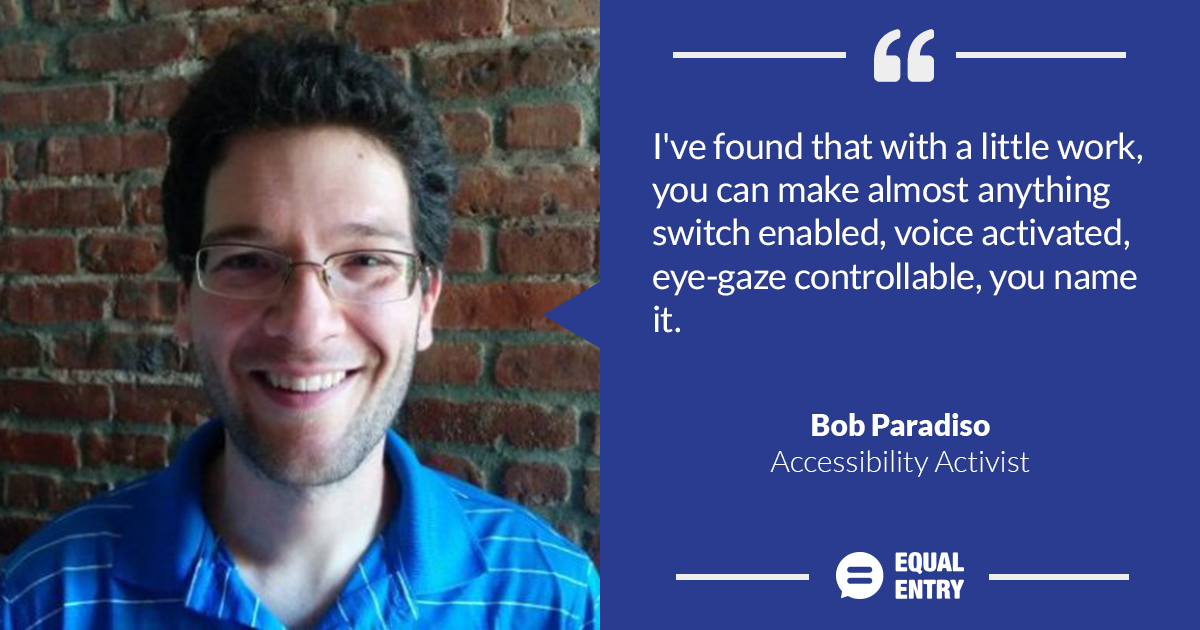Summary

The newest installment of our Accessibility Activists column is an interview with Bob Paradiso, Independent Rehab Engineer. With a background in programming video games, Paradiso now modifies electronics and hardware to enable people to do more.
When did you first get started in accessibility?
Maybe it was when I first started playing around with hacking a power wheelchair to be driveable with my Android phone. After which I started to realize (and test out) that really you could use absolutely ‘any’ access method to drive a wheelchair, and very affordably (with varying degrees of safety depending on the environment).
What project are you most proud of from your work in accessibility?
Well, still related to the wheelchairs, I’m most proud of this one deluxe demo I setup in apartment. I had a power wheelchair that I rigged to be driveable with a cheap ($130) eye-gaze setup. Once I had that working I added more and more to the eye-gaze controlled menus such that in the end you could:
- drive the power wheelchair around
- turn simple appliances on and off around the apartment (lights, fan, etc.)
- use IR learning and playback to control slightly more complicated things like set the station and volume on a radio or TV
- control a robotic arm that I attached to the wheelchair so that you could pick up things and move them around
What is your current area of focus in the accessibility field?
Alternative controls for various electronics and appliances in a person’s life, customized to be accessible for that particular user. I’ve found that with a little work, you can make almost anything switch enabled, voice activated, eye-gaze controllable, you name it. The trickiest part is when the control needs to be real-time, no lag or delays allowed. But with some creativity, there’s still a lot that can be done.
What accessibility barrier would you like technology to solve?
Crossing a busy street. I’m sure there’s countless examples, but I pass by the corners of E 23rd and 3rd Ave, or E 23rd and 2nd Ave in Manhattan during my lunch breaks often. I’ve helped a lot of people cross those streets, and let me tell you, it’s not easy. Even if we keep moving steady without any stopping, we often don’t make it across before the light changes. I remember one time in particular we actually started ‘before’ we had the light since there was a break in traffic, and even with that head start, we were only just past half way when the light had changed again and now we were in the path of oncoming traffic. I’m not sure what the best answer is yet, every one I think of is far less than ideal. But if you have various mobility and/or vision impairments, crossing some streets in Manhattan is either not possible on your own, or dangerous in a very real way. I feel like it doesn’t have to be that way.
To see photos of Paradiso’s work, visit http://bobparadiso.com/.